Subscriber Spotlight: Leta Keens
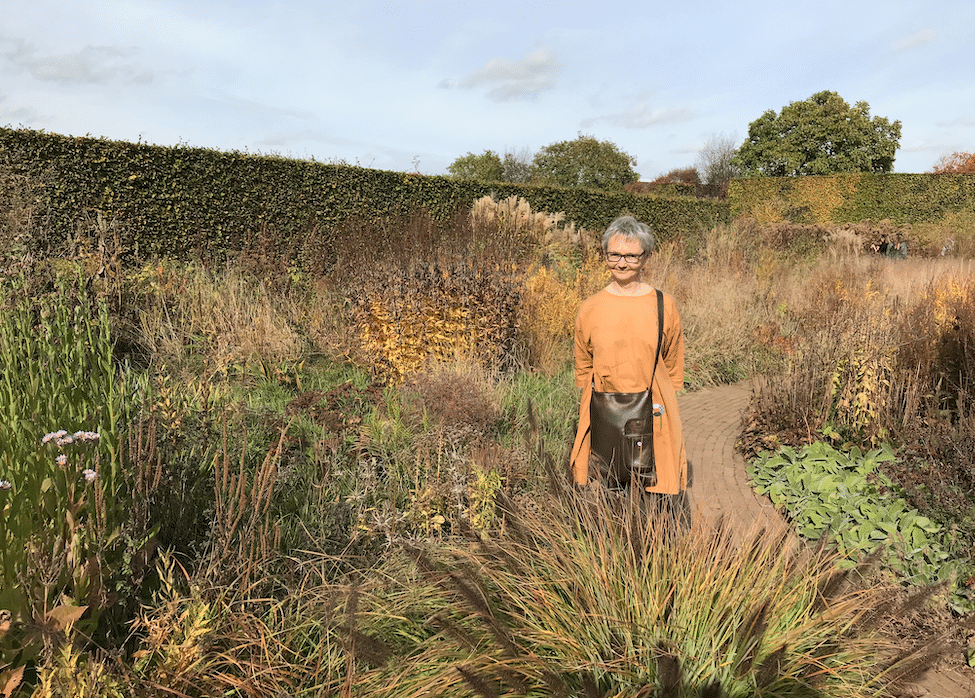
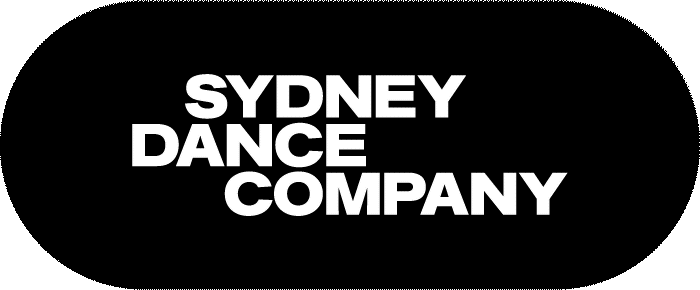
published
Photographer
Melbourne-based designer Harriet Oxley and creates costumes for dance, opera, musicals and theatre. In the past, she’s teamed up with choreographers across Australia such as Lucy Guerin, Kyle Page and Amber Haines (Dancenorth), Anouk Van Dijk (Chunky Move), Stephanie Lake, Michelle Heaven, Ros Warby, Victoria Chiu, along with GideonObarzanek,, whom is currently creating Us 50, an epic new work featuring 50 performers.
We chatted with Harriet about her latest collaboration with Gideon as part of Sydney Dance Company’s 50th Anniversary year.
I first met Gid around 20 years ago when I was a fashion design graduate. I was completely green and didn’t know much about contemporary dance, but I used to make lots of costumes for myself and my friends, and people would tell me I should design for dance. I wrote to him and he kindly agreed to meet up and look at my folio. So I went along with photos of all the things I had made (embarrassing to think of them now!)… but he was so kind and respectful and very encouraging. I then drifted into film and TV work and after a few years I decided to pursue live performance design, so I went back to VCA. While I was there, I worked on a dance piece as a student designer and Gid happened to be the choreographer, which was a bit serendipitous. After I graduated, I designed a production for the Victorian Opera that Gid happened to see, and he recommended me to Stephanie Lake for a show she was doing at Chunky Move. He then invited me to design Assembly for him, a co-production with Victorian Opera, and it ended up being a pretty creatively formative experience for me. We’ve worked together quite a few times since. Through him I’ve also been able to meet and work with some other amazing choreographers, such as Lucy Guerin and Stephanie Lake, and had some of the best professional experiences, such as travelling to China for a research trip before we designed One Infinity. Amazing!
Gid and I both love colour and have explored the use of colour in most of our collaborations. That has probably been the area where we share the most empathy and have achieved a really good level of success. We’ve used colour as a tool to investigate concepts of dynamics, duality, evolution or progression. Not in a conscious way – we don’t ever discuss things in those terms. That’s just how I see it.
One challenge we have always had is that I get a bit too ‘designery’ for him and he will freak out and get me to pull right back. He generally loves costumes not to look like costumes, more like clothing that happens to be danceable. Occasionally he will let something through though, so I keep trying!
One thing that I love about working with Gid is that he keeps changing and evolving. Sometimes he will express an interest in exploring things he would have completely vetoed in the past.
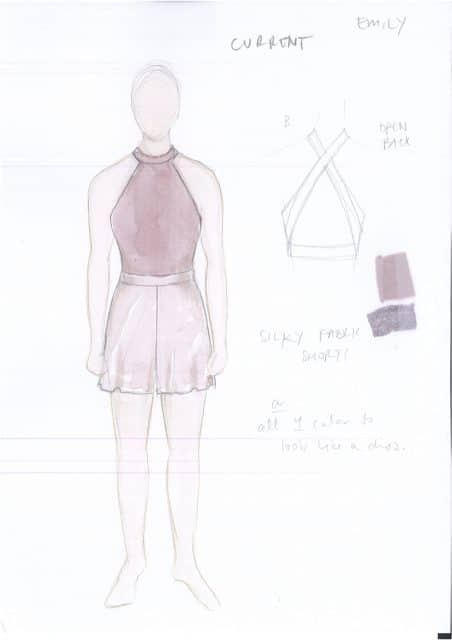
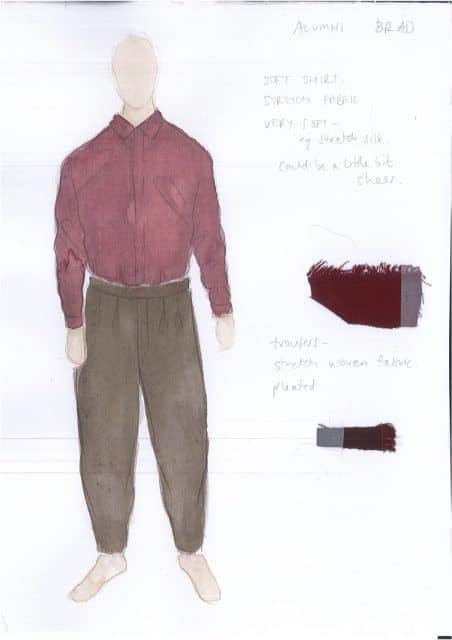
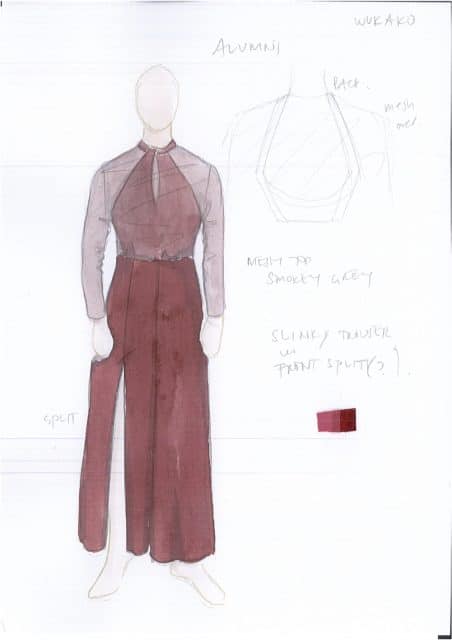
I generally get a brief from Gid early on as to what he envisions for the piece. He often has quite a clear idea of what it will broadly be. Then he leaves me to finesse the concept and flesh it out and bring in the detail. I do lots of research and gather together references, often from fashion, but sometimes from textiles or paintings or interiors, particularly for creating the colour palette. I send those through, and if he likes them, I’ll start sketching. Depending on how much time we both have, I try to send through rough sketches before I narrow it down to the finished colour sketches.
I like to work on final sketches with colour before I go out sourcing fabrics, which is a bit dicey as you don’t know that you’ll find what you’re looking for. For me though, the process of mixing the watercolours somehow informs the choices I make, as I can hold in my head all the shades that I used to contribute to the final design sketch.
I’m a very hands-on designer in that I love the making side of costuming and will often be involved in pattern-making and sewing for the piece. I often reuse patterns and styles from previous productions, though of course they evolve. There are some shapes that work really well for dance and I will use them again and again in different variations.
I try to get samples on the floor during the rehearsal period so we can see if the garment will work with the movement. It can be scary showing the dancers and choreographer a rough draft of something, but you just have to be confident and reassure them that it’s just an offer which is open to change.
I was inspired by the dancers being presented at the opening night of the last show I worked on for Sydney Dance Company, where they all swept down the staircase looking glamorous in their evening wear. I wanted to incorporate some of that as a kind of illustration of the idea that the company is 50; it’s mature and sophisticated and a bit elegant. I also want the costuming to be sympathetic to the sound/music and of course the choreography, so once I saw the rehearsal footage that also influenced the types of lines and garments that I wanted in the mix. The colour palette is very much a collaborative decision that Gid and I made together which is about the spectrum of ages and stages of life in the group.
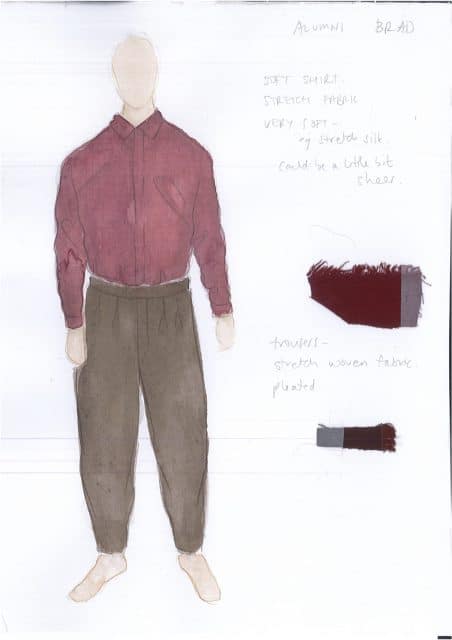
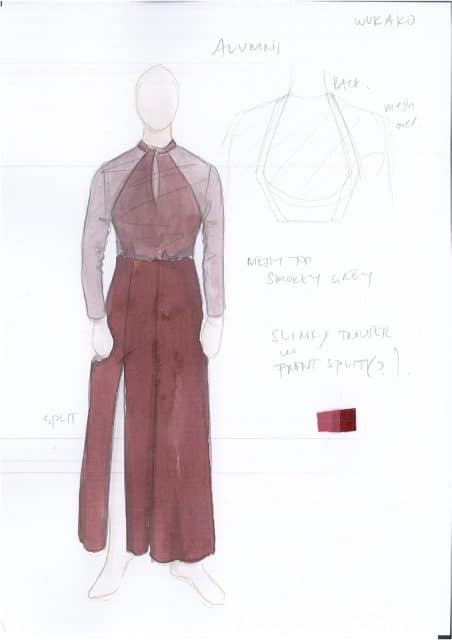
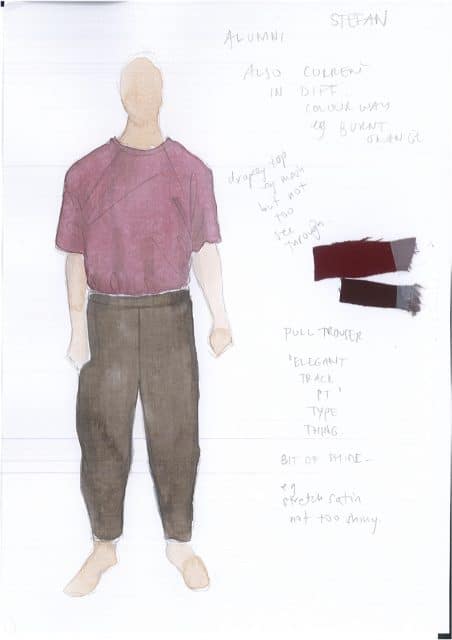
My intention is that the big group all together on stage will create a really satisfying image or vision. I would hope the image will invite audiences into the piece, and the feeling will hopefully be one of wonder and immersion. I have chosen lots of luxe fabrics, fabrics with shine, sparkle, drape or a bit of texture, so hopefully the dancers’ bodies will resonate in the space.
The alumni are just so stunning and look much younger than their age. I have been telling all young people they should get involved in dance, these dancers just age so slowly! Dance must do wonders for the body…
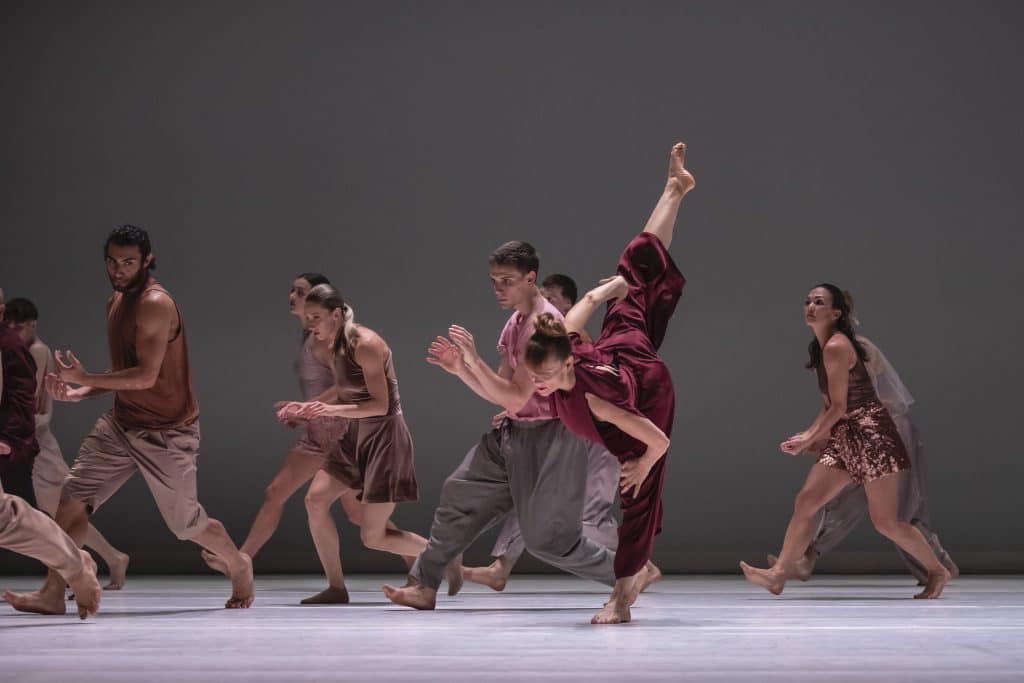
Alumni dancer Kathryn Dunn shot by Pedro Greig
Dressing dancers is kind of cheating a bit isn’t it? I mean it’s hard to make dancers look bad! The difficulties with dance are all in the things audiences can’t see: washing, maintenance, touring – dance costumes ideally need to hold up to the rigorous treatment they will get. There are issues such as how the garments react to movement- such as riding up and not returning back to where they should sit on the body. Floor work is really punishing on some fabrics – knees can wear through, knee pads may or may not need to be worn and therefore hidden (or not). Partnering can also be really rough on costumes and can inhibit fabric choices. Inversions of the body which can dictate what kinds of costumes work or don’t work- dresses and skirts can be hard for that reason.
I have found the needs of circus pretty similar to dance and my dance work has stood me in good stead for that. If anything, circus is even more technical than dance and usually incorporates the use of specific shoes, which adds a whole extra dimension to costuming. Circus costuming is also different in that it’s working more with the idea of creating characters.
Opera also requires that exploration of character, and I love working with wigs and makeup to help transform a performer into a character- it’s really quite magical.
For me, working with opera is similar to dance in that you are working with light and sound/ music to create images and feelings, and they can both be very abstract.